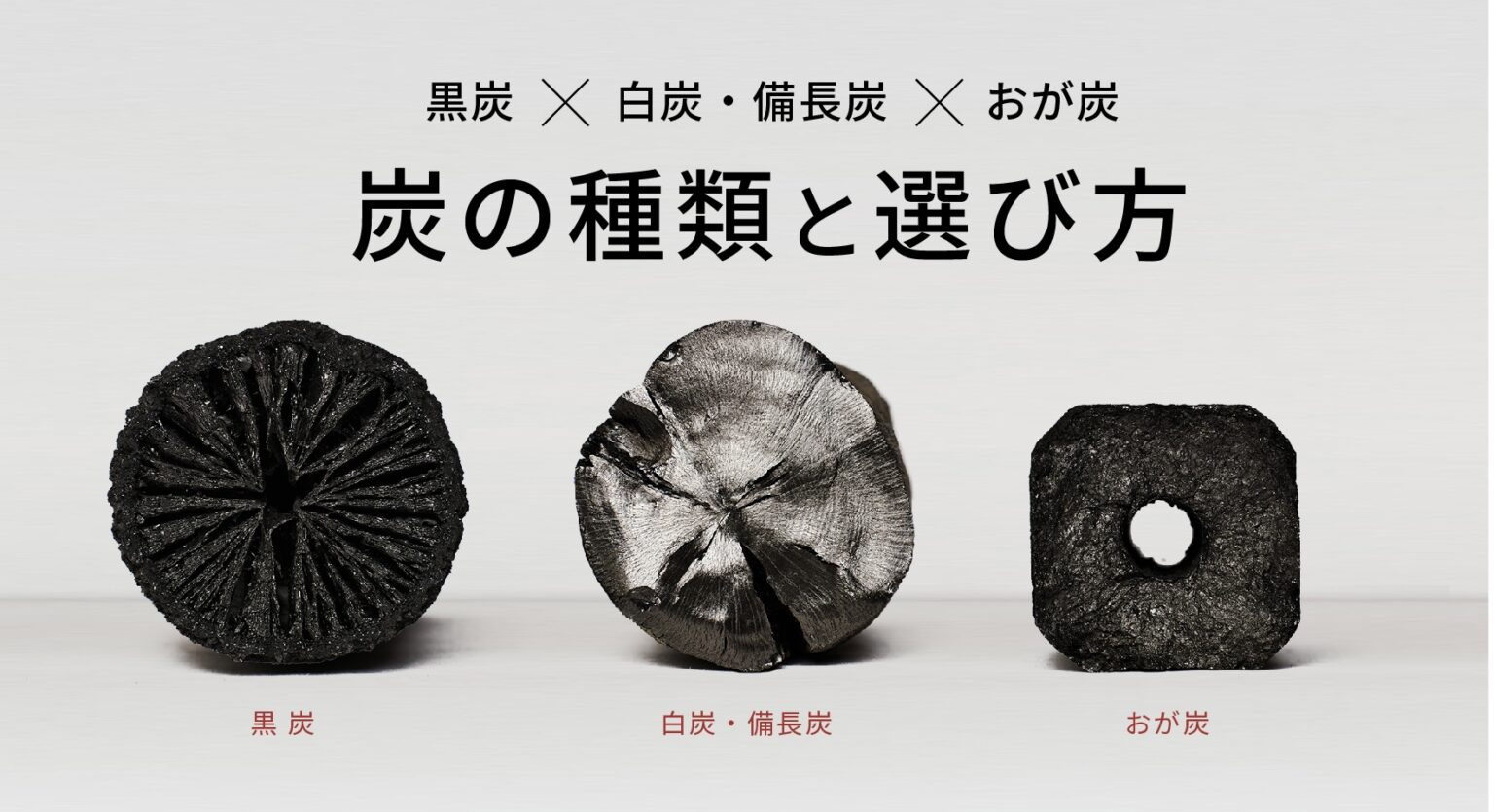What is the best charcoal for grilling?
Just seeing the words “charcoal grilled meat” brings to mind the sizzling
sound of grilling,
red-hot charcoal ,
and an aroma that goes well with rice
, and many people may feel hungry.
Grilled meat grilled over gas is inevitably watery and lacks flavor.
This is because gas has the characteristic of producing moisture when burned.
On the other hand, charcoal does not produce moisture when burned, so the surface is crispy and the original flavor of the ingredients is brought out. The
fat from the ingredients drips onto the charcoal and turns into a mist that wraps around the ingredients, creating the unique flavor of charcoal grilling.
Characteristics of charcoal suitable for grilling yakiniku
① High heat charcoal
When it comes to yakiniku, the meat itself is not as thick as steak, so it is absolutely necessary to grill it over high heat one after the other. If
the heat is weak and it takes too long to grill, the meat will become tough all the way through and will not brown, making it taste just like it was grilled on a lukewarm hot plate.
High-heat charcoal grills the meat to a golden brown surface while keeping it juicy inside.
② Charcoal with a long burning time
If the burning time is short, the charcoal quickly becomes small and the heat drops, making it difficult to cook the food, which can be stressful for customers.
Also, from the restaurant’s perspective, charcoal with a short burning time is a matter of life and death, as it increases the effort required to add more charcoal and reduces the amount of food that can be served per group.
If we can make our customers happy and reduce the effort required for the restaurant, then we have nothing to complain about.
3) Charcoal that does not easily catch fire
If the meat catches fire, it will quickly start to smell burnt, ruining the charcoal grilling experience.
(If you want the strong aroma of charcoal grilling, charcoal that catches fire is useful, but it takes skill to cook the meat before it starts to smell burnt. In the case of yakiniku, customers cook the meat themselves, so it is better to avoid places that catch fire too easily.)
Characteristics of charcoal that are not recommended
Even if you want to enjoy yakiniku, charcoal that does not heat up well and does not cook easily will lower customer satisfaction.
Also, charcoal that cooks slowly has a negative impact on restaurant turnover.
Charcoal with a low heat output has a low purity and produces a lot of ash, so at first glance it may seem to burn for a long time, but in fact the ash is interfering with the combustion and it is not burning very well.
There are many such types of imported sawdust charcoal sold at extremely low prices, so you need to be especially careful. Also, charcoal with low purity produces a lot of smoke, is prone to flames, and often has an odor.
Recommended products
Binchotan charcoal
Binchotan charcoal is more expensive than sawdust charcoal, but it grills meat sweetly.
Another thing that is not widely known is that when you grill meat using good Binchotan charcoal, there is less smoke, which leads to very high customer satisfaction.
Featured products
・Tosa Binchotan Charcoal Tokuwari
・Tosa Bincho charcoal Grade 1 (Tokugami)
・Lao Binchotan charcoal Arakamimaru
・Lao Binchotan charcoal, rough top grade (large rough grade)
・Lao Binchotan charcoal, rough grade small (roughly cut small)
Click here for the Binchotan and White Charcoal product list page
Sawdust Charcoal
10kg-.jpeg)
Sawdust charcoal is cheaper than binchotan charcoal.
In particular, if you choose high-quality domestically produced charcoal, there will be less ash, and unlike binchotan charcoal, there is no need to worry about it splashing, so you can use it with peace of mind.
Featured products
・Nishiki Binchotan charcoal
・Nishiki raw charcoal
・Heian Binchotan Charcoal (Blue)
Click here for the product list page for sawdust charcoal
“Charcoal is a burning food ingredient.” For all your charcoal needs, leave it to Asauchi Fuel, founded in the Meiji era.
Using the above as a reference, choose the charcoal that is right for your shop by considering factors such as the heat output of the charcoal, the deliciousness of the finished product, the charcoal burning time, your shop’s opening hours, and the cost of charcoal.
At Asauchi Jinzen, we understand and assess the individual characteristics and features of over 100 different types of charcoal, and we recommend the charcoal that is best suited for cooking.
Please choose “good charcoal” as your fuel for the morning.








ưewerwer
srfdsgdgdgdgdfg